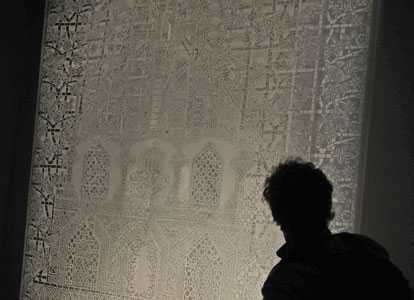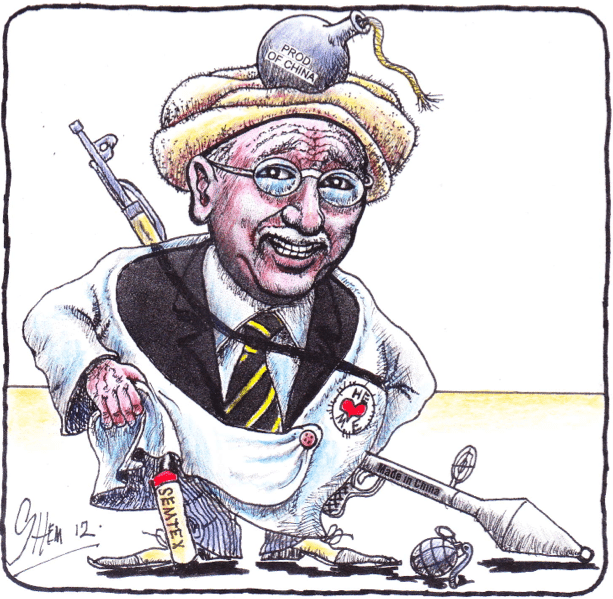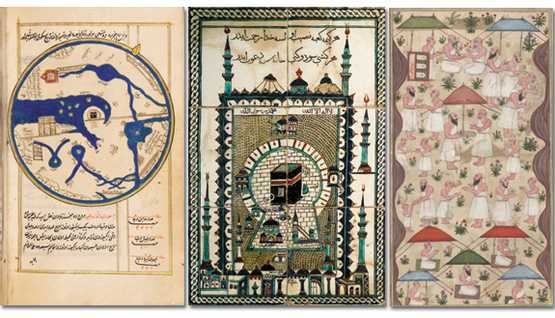Is there life after Gagosian?
For Damien Hirst, there may be. The answer will come momentarily, with the first-ever exhibition of his work in Istanbul, opening this Friday at Portakal Art and Culture House.
Not that the artist himself will benefit from the exhibition – the show of 31 spin paintings is entirely secondary market, culled from clients in London and Switzerland, according to Maya Portakal, great-granddaughter of the company’s founder, Yervant Portakal, who established the company as an auction house in 1914. (Portakal now also offers private sales and stages the occasional sales exhibition, such as this one.)
Neither Hirst nor Gagosian was involved in creating the upcoming show, though Maya Portakal is quick to assure that most of the paintings come originally from Gagosian or White Cube, Hirst’s London gallery before it folded last year. Indeed, a Gagosian spokesperson said that the gallery only heard about the exhibition yesterday – five days before the scheduled opening.
In a city where works by internationally-recognized artists are rare and, for the most part, take place only in museums, not commercial spaces, news of the Hirst event has received widespread attention – and equally as much speculation. Some dealers, already nervous about the infiltration of the Turkish art market by foreign giants like Marlborough and Lehmann-Maupin, have feared that the exhibition signaled the first footsteps of a Gagosian invasion (they’ll be pleased to learn otherwise). And Turkish art critics, attending a recent congress of the International Association of Art Critics, ridiculed not just Hirst, but his admirers along with him. Even more, when asked for her views on the exhibition, Milliyet art critic Aysegul Sonmez, replied, “That the pieces are on display in an auction house gallery is really very convenient for Hirst, who as an artist is the symbol of the current cruel culture industry, of how art is more attached and addicted to speculation and auction houses.”
Ouch.
Collectors, for their part, also seem skeptical: said one – among the few Turkish collectors who also buy non-Turkish art — “I’m not even planning to attend the show, darlin’.” Can Elgiz, however, owner of the Museum Elgiz and the first Turkish collector to buy international contemporary art on a large scale, does plan to stop by and have a look, says his wife, Sevda. But Can Elgiz can rarely be kept away from an exhibition of this magnitude, wherever it takes place. Whether he will buy or not is an entirely different question.
But at least one dealer (who asked not to be named) thinks the show will be popular among Turkish art lovers – if not actual collectors. “Turkish people love kitsch,” she said.
Ouch again.
So whether, in other words, Istanbul can save the Hirst market – with or without a Gagosian connection – remains unclear, at least until the show ends; but what is certain is that a Damien Hirst exhibition in Istanbul may in some ways save the Turkish art market. Far too long confined to its own production, provincialized as much by galleries as by museums, Turkey’s art scene has only recently started to branch out to explore and embrace international contemporary art. It often strikes me that the vast majority of the country’s artists have never actually seen a Warhol, a Hirst, a Rothko, let alone a Picasso, a Titian, a Rembrandt. (Not only does the art not come here to Turkey, but artists themselves have a difficult time obtaining visas to Europe to view the collections of museums there.) Is it any wonder, then, that much of the art here (though certainly not all) is purely decorative and often gimmicky, having little to do with what the artist Richard Hambleton once brilliantly termed “the continuum of art history”?
Collectors, naturally, have similarly suffered – despite the fact that, by and large, they have an easier time traveling abroad, able as they are to demonstrate a reliable source of income on visa applications (something artists can rarely provide); occasional travel abroad isn’t really quite enough. The result is a simplicity in the art scene here, where both the collections and the art itself largely lack the depth and complexity – for better and for worse – one finds in America and Europe. It is entirely localized, with rules and values and aesthetics of its own.
For a while, it worked; but it’s now straining at the seams, bursting to find new ground and to become part of the larger, more adventurous and multifarious world of international art. If this exhibition – alluring as much in aesthetics (what’s not to like about spin paintings?) as in market cachet – can help open minds and doors and talents among Turkey’s artists and collectors, then all the better for it.
Tags: Aysegul Sonmez, Damien Hirst, Gagosian, Istanbul, Istanbul Art Scene, Maya Portakal, Portakal, White Cube
via Can Istanbul Save Damien Hirst? (Can Damien Hirst Save Istanbul?) | Cultural Affairs | ARTINFO.com.



